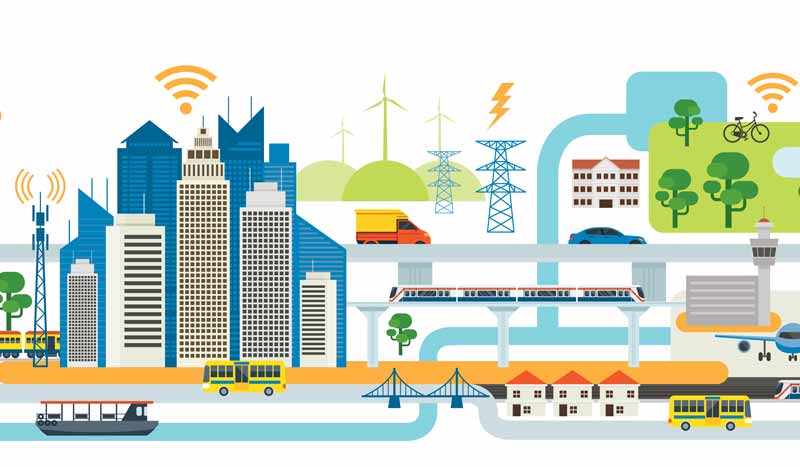
GREEN IS THE NEW BLACK
Going green has been a long battle that society as a whole has had to face since the 1980s, when the devastating news of climate change rocketed into conversation after the sudden spike in the global temperature. With ever increasing temperatures, we faced a whole slew of ramifications, such as drastic atmospheric conditions and the slow depletion and destruction of our environment and its resources. Over the last 40 years, we have only worsened the global condition of climate change and its effects. Thanks to the development of innovative technology, however, a growing awareness and the unification of global leaders to implement laws for sustainability, there is a high chance we could save our planet.
When it comes to our environment and its habitat, we have to admit that we could do a much better job at maintaining our green lungs and natural resources, which is where technology steps in. In the era of digitalisation, we have technology that can be created to monitor the environmental situation and provide scientists with data, from which a solution can be formed. Known as environmental monitoring, this method of monitoring the quality of the environment has helped scientist with one of their bigger breakthroughs in the field, which is the involvement of methane and its toxicity on the environment.
Scientist at the Environmental Defense Fund measured the emissions of methane, a greenhouse gas that hosts 80 times more warming power than carbon dioxide, from the oil and gas sector in the US and, through environmental monitoring, found out just how much methane the sector was producing. Using a vast array of technologies such as sensors mounted on drones, airplanes and even Google Street View cars, they ascertained that the US oil and gas industry alone produced 13 million metric tons of methane yearly. The data, which shocked many, worked as a catalyst to push policy makers and industry leaders into implementing laws that worked towards decreasing, if not altogether eliminating, the level of contaminants that are released into the air, water and soil.
Environmental monitoring then helps play the part as the enforcers of these environment-related laws and regulations, from using Geo- Spatial Measurement of air pollution systems to test the air around oil and gas companies for the amount of pollutants present, to utilising drones as security cameras to keep poachers from illegally hunting wild animals. Organisations such as the Global Climate Action Summit, the International Energy Agency and World Wildlife Fund for Nature
have worked to spread awareness by hosting international summits, and collating data and information to back their findings. Many international companies have also set examples with the investments they have placed in creating a sustainable and environmentally friendly workplace.
Panasonic, one of the highest ranking global brands from Japan, has a programme called ‘Panasonic Environment Vision 2050’ that it launched in 2017, that commits it to a goal of creating more energy than it uses. This eco-conscious aim is enabled through appropriate energy management, and the brand is currently working on developing technology that adheres to the four viewpoints of energy creation, energy saving, energy storage and energy management. The company is also switching to reusing and recycling parts and materials for its products, and switching its lighting to LED to create zero carbon dioxide emissions in its factories.
IKEA, the renowned Swedish furniture and home accessories brand, is another company that has paved the way for global businesses to adopt and execute a successful sustainable strategy. With its ‘People and Planet Positive’ initiative, launched in 2012, the idea is to convert its entire business operations into a sustainable one. From ethically sourcing 100 per cent of it cotton through ethical means and 50 per cent of its wood from sustainable forresters, to monitoring its impact on climate change, inequality and unsustainable consumption, there’s a reason IKEA is used as an example to show the effects that a business committed to sustainability, the environment and its people can make. Following the United Nations Sustainable Development Goals (SDGs), IKEA is using the goals as a guide on the issues it needs to work, including climate action, no poverty, zero hunger, industry, innovation and infrastructure.
Even with a large company such as IKEA adopting a hands-on approach towards building a sustainable future and investing time, resources and money into its projects, there are a lot more companies, both small and large, that would be able to create a bigger impact should they improve
or invest more time into their sustainable efforts. The advancement of technology, and the progression of humanity as a whole, will not to amount to much with a dying planet that hosts no long-term future. In this case, a little bit goes a long way for the generations to come after us.
TEXT NEDA AL-ASDI & SWAROOPINI NAIR


